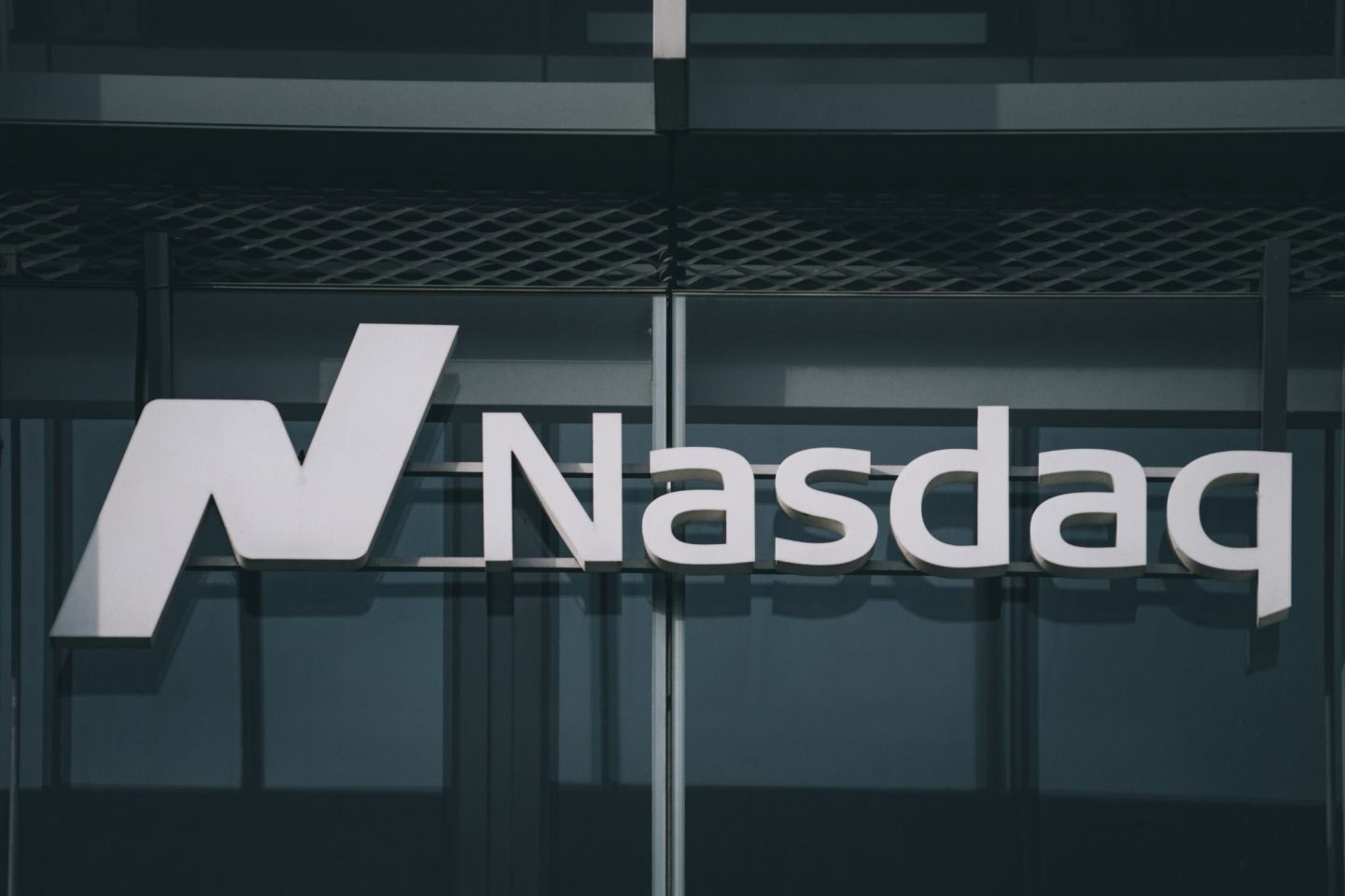A complete guide to trading the US Tech 100 index

Our US Tech 100 index tracks some of the leading US stocks outside of the financial sector. Learn about its price history to its key price drivers, and how to trade it with CFDs.
What is the US Tech 100?
The US Tech 100 market represents 100 of America’s leading companies outside of the financial sector listed on the Nasdaq Stock Market. The index is broadly comprised of technology companies, although there is some representation from sectors like healthcare, consumer services and industrials.
The constitution of the US Tech 100 is determined by a modified market capitalisation-weighted methodology, with individual company weights capped to ensure diversification. It is reviewed annually, rebalanced quarterly, and adjusted for corporate actions to maintain its representation of the largest non-financial stocks on the exchange.
Like other major indices such as the Dow Jones Industrial Average, the US Tech 100 is routinely used as a gauge for the overall health and performance of the domestic stock market and economy.
What is the US Tech 100 price history?
The US Tech 100 index was introduced on 31 January, 1985, as a way to highlight the largest non-financial companies listed on the Nasdaq Stock Market. From its inception, the index has been seen as a barometer of the technology and growth sectors capturing the performance of companies at the forefront of innovation and market expansion.
The dot-com boom in the late 1990s was a key event for the index, when investor enthusiasm for internet and technology stocks reached unprecedented levels. As a result, March 2000 saw the price peak, driven by the explosive growth of companies like Microsoft, Cisco, and Intel. However, the subsequent dot-com bust saw the index plummet, losing nearly 80% of its value by October 2002.
The recovery from the dot-com crash was slow but steady, with the US Tech 100 eventually regaining its losses and reaching new highs. Another key event was the financial crisis of 2008, which led to a sharp decline in the index, although the effect wasn’t as severe as broader market indices due to the lack of financial sector exposure.
In the 2010s, the index experienced a significant resurgence, driven by the growth of tech giants such as Apple, Amazon, Google (Alphabet), and Facebook (Meta). The introduction of revolutionary products and services, alongside the rapid expansion of the digital economy, propelled the index to new record levels.
The Covid-19 pandemic in 2020 initially caused a sharp drop in the index as global markets reacted to the economic uncertainty. However, it quickly rebounded and reached new heights, fuelled by the increased reliance on technology and digital services during the lockdowns. Companies involved in e-commerce, remote work, and streaming services saw particularly strong performance, highlighting the index's role as a benchmark for the tech-driven economy.
2021 saw further price increases, driven by tech giants like Apple, Amazon, Microsoft, and Alphabet. In 2022, the index faced volatility from inflation concerns and monetary tightening but remained resilient. By 2023, the index continued to thrive, benefiting from advancements in artificial intelligence, cybersecurity, and renewable energy, underscoring its pivotal role in the tech-driven economy.
Today, the Nasdaq-100 continues to be a key indicator of the health and performance of the largest and most influential non-financial companies on the wider exchange, reflecting the ongoing trends and shifts within the technology and growth sectors.
What factors might affect the performance of the US Tech 100?
The performance of the US Tech 100 may be influenced by various key factors. Here are a few of the main considerations:
- Economic indicators: the health of the American economy tends to be reflected in the performance of the index, so data points like GDP growth, unemployment rates, and consumer confidence are all important metrics to follow. Additionally, global economic conditions can affect the index due to the multinational nature of many of its constituents.
For more on the upcoming economic data points that matter, check out our Week Ahead newsletter, released on Mondays, and explore our market analysis for a more in-depth focus on the fundamental and technical drivers of assets. - Monetary policy: the actions of central banks, particularly the Federal Reserve, play a crucial role. Interest rate changes, quantitative easing, and other monetary policies can influence investor sentiment and the cost of borrowing, thereby affecting the US Tech 100.
- Technological advancements: innovation and the introduction of new technologies drive growth in many companies listed on the index. Developments in areas like artificial intelligence, cloud computing, and biotechnology can lead to substantial volatility.
- Regulatory environment: changes in government policies and regulations, especially those related to technology, antitrust laws, and data privacy, can impact the performance of companies in the index. Increased regulation or legal challenges can pose risks, while favourable policies can provide a boost.
- Market sentiment: investor perception and market sentiment towards the technology sector can have an impact. Factors such as earnings reports, analyst ratings, and market trends can cause fluctuations in the index.
- Global events: geopolitical developments, trade policies, and international relations can have a significant effect on sentiment and trading psychology. Events such as trade tensions, tariffs, and political instability can impact the performance of the Nasdaq-100.
What companies are in the US Tech 100?
The US Tech 100 contains some world-renowned tech businesses at the top of their sector, such as giants Apple, Meta and Alphabet, and microchip leader Nvidia. It also features electric vehicle luminary Tesla, telecoms and media conglomerate Comcast, and food and beverage company Pepsico, among others.

What are the US Tech 100 stock market hours?
The US Tech 100 stock market hours are based on the hours of the Nasdaq Stock Market, which operates its regular trading session from 9:30am to 4:00pm local time, or 2:30pm to 9:00pm UTC.
Learn more about stock market trading hours for a full understanding of trading sessions and timings.
If you choose to trade CFDs, you can follow the US Tech 100 performance live with the comprehensive US Tech 100 price chart.
Monitoring the index’s activity can help you to keep an eye out for any key fundamental or technical events that may affect short-term movements in the price.
How to trade the US Tech 100 with CFDs
If you want to take a position on the US Tech 100, you have a choice of methods. First, you can trade a derivative product such as a contract for difference (CFD) on the stock market price using leverage. A CFD is a financial contract, typically between a broker and a trader, where one party agrees to pay the other the difference in the value of a security, between the opening and closing of the trade.
Using a CFD, you can either hold a long position (speculating that the US Tech 100 price will rise) or a short position (speculating that it will fall). This is considered a short-term investment or trade, as CFDs tend to be used within shorter timeframes.
CFDs are traded on margin, which means that a trader can get exposure to larger positions with a relatively small outlay. This amplifies the potential profits, but also the potential losses, making such trading risky. You can learn how to trade shares in our comprehensive guide to shares trading.
Aside from CFDs, you can also trade the US Tech 100 through instruments like options, ETFs, and mutual funds. Options allow for speculative investment with controlled risk, ETFs enable straightforward stock-like trading of the index, and mutual funds offer a managed, buy-and-hold approach to tracking its performance. Each offers an alternative to the leveraged trading of CFDs, catering to different risk management approaches and investment strategies.
To trade share CFDs with us, just sign up for a Capital.com account, and once you’re verified, you can use our advanced web platform or download our intuitive yet easy-to-use app. It’ll take just a few minutes to get started and access the world’s most-traded markets.
Why trade index CFDs with Capital.com?
Trading index CFDs with Capital.com means you’ll enjoy an intuitive, easy-to-use platform, 24/7 support, fair and transparent pricing, along with award-winning education to help build your experience in the markets.* You can seamlessly integrate our smart platform with elite third-party software TradingView and MT4, and refine your strategies with our risk-free demo.
*Awarded best-in-class for education at ForexBrokers.com’s 2024 Annual Awards
FAQ
Why is the US Tech 100 important to traders?
The US Tech 100 is considered a leading stock index due to its representation of the performance of America’s largest and most recognisable non-finance companies. This means the index performance is scrutinised by financial commentators and traders worldwide, who look out for fundamental events such as interest-rate decisions and GDP for clues on how the market may move next.
What affects US Tech 100 prices?
The US Tech 100, which represents 100 of America’s most high-profile listed companies, is influenced by various factors like economic data, global economic conditions, sector-specific changes, and successes or failures of the largest, most influential stocks in the index.